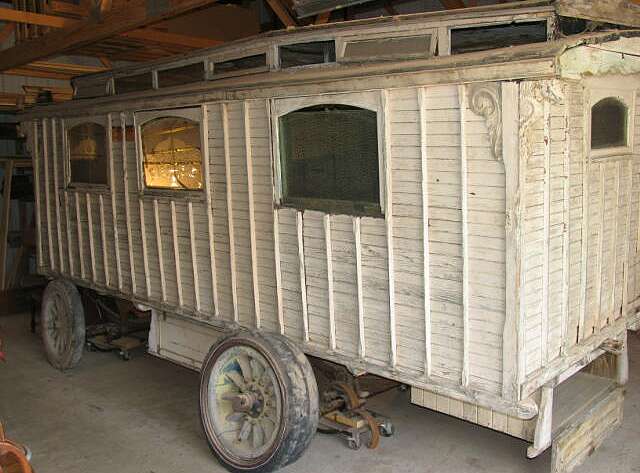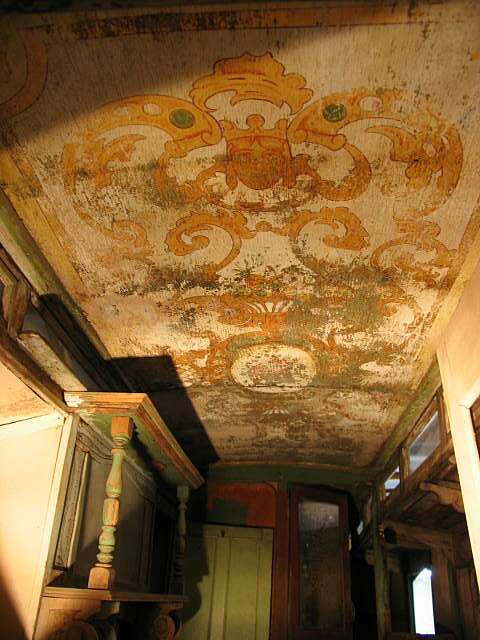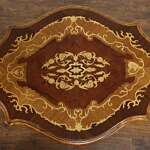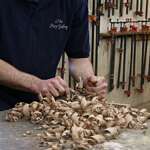The Gypsy Wagon or caravan was hand-carved in England around 1900, and was used as a home by a family of Gypsies, or Travelers as they prefer to be known. An early version of the RV, it was pulled by a single sturdy horse leisurely about the countryside, as the family plied their trades and lived according to nomadic traditions.
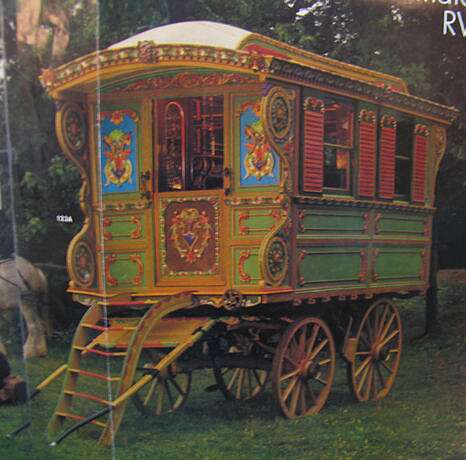
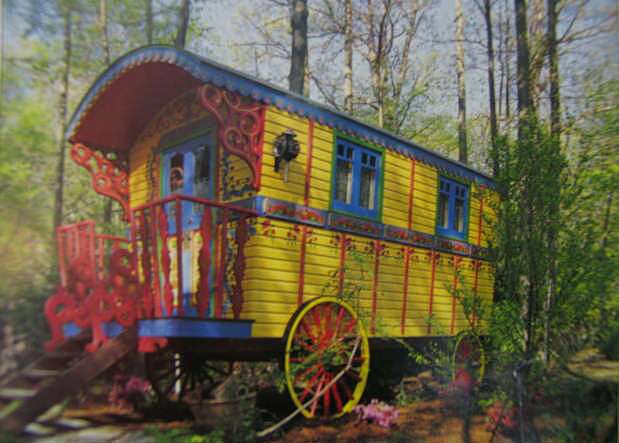
There are still Gypsies traveling in Britain living in such homes. Recently, we were in the countryside near Bath, and met “Smiffie” who lived with his wife and baby in a simpler version of the Gypsy wagon. Besides his two horses and a bicycle, he was equipped with a cell phone as a concession to modernity. As a blacksmith and carpenter, his principal trade was to custom build such “caravans” for Travelers and others who might enjoy the wandering life or simply park them in their yards as retreats.
The wagon had fallen into disuse in England when its family of owners switched to an automobile and trailer several decades ago. It caught the imagination of a young American couple on their honeymoon, a Midwest department store heir and his beautiful bride. They arranged for shipment back home to America, and they planned to restore it and keep it in the garden of their home. Unfortunately, before the refurbishing began, the romance died, and the wagon languished in a warehouse for years.
The overall size of the wagon is approximately 18′ long, 7′ wide and 9’4″ tall. The wheels have wooden spokes; they are rimmed in iron and have solid rubber tires. The front wheels are 30” in diameter, the wider rear wheels are 33” in diameter. Axles are iron, and there is a pivoting arrangement for turning the front axle. There appears to have been some kind of drum brake system for the rear wheels. Each wheel has leaf-typed springs to cushion the ride.
There is a Y-shaped hitch for the front, and a hitch at the back, probably for a trailer. The right side of the wagon has no windows; the bedroom to the rear has a small hammered glass window on the back and another larger window with the same translucent glass on the left side. Further forward on the left side are two exceptional windows lighting the front room of the wagon. They are carved and etched glass, and are intact, although the frames are in poor condition.
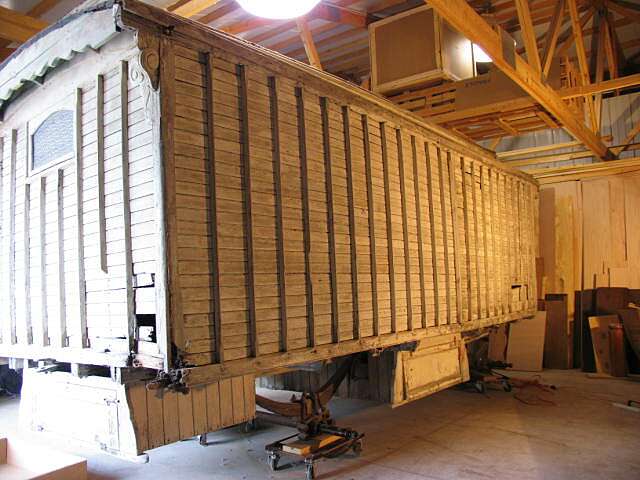
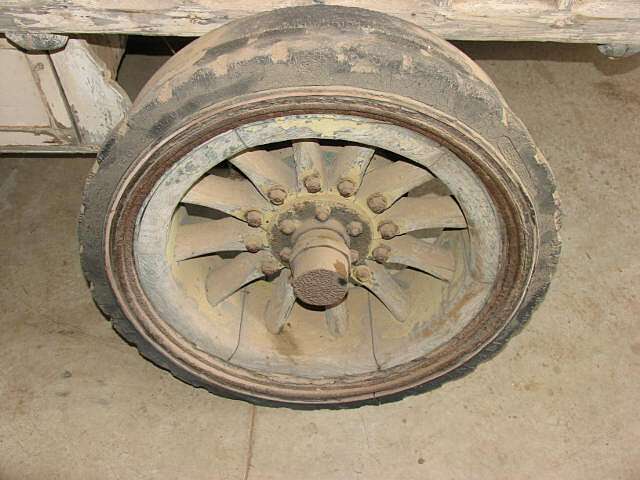
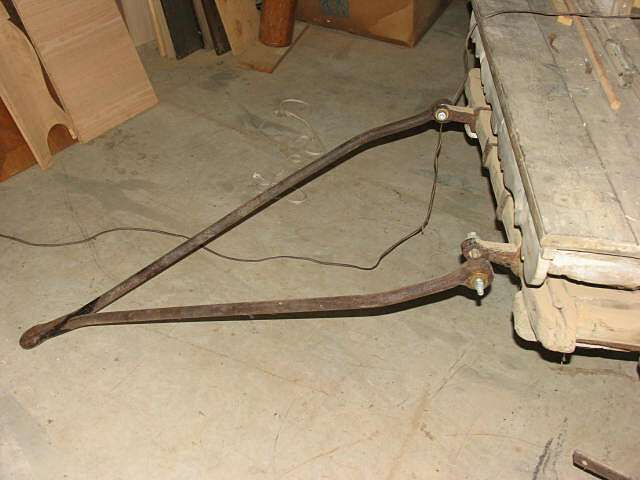
Both sides and the back have outside storage compartments with wooden doors. Each corner of the wagon has a carved horse head, one especially is incomplete. The roof has a raised center with small, open-able side windows for ventilation, like an old train car. The roofing is similar to tar paper, nailed and tarred at the edges and joints. Access is through a door at the front, above a ledge that served as a step and a bench. The glass in this door is missing. The wagon appears to be built mostly of pine, with hardwood structural members, wheels, etc. Many coats of paint are visible, with much peeling and flaking. The floor inside is bare pine, attractively worn.
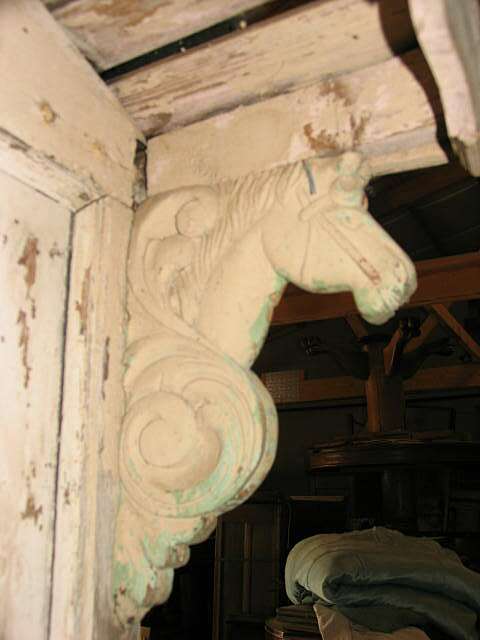
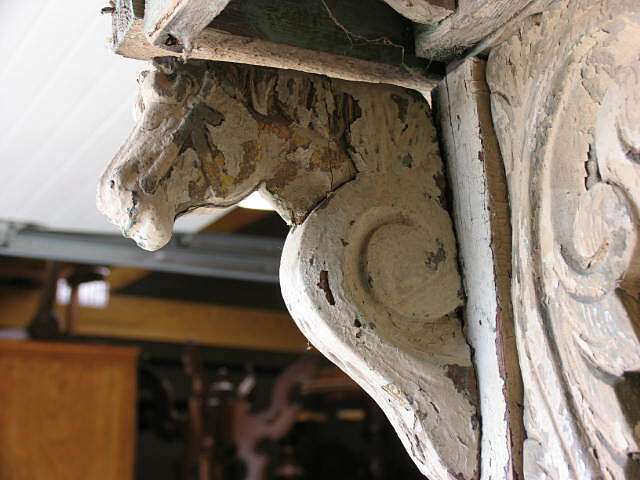
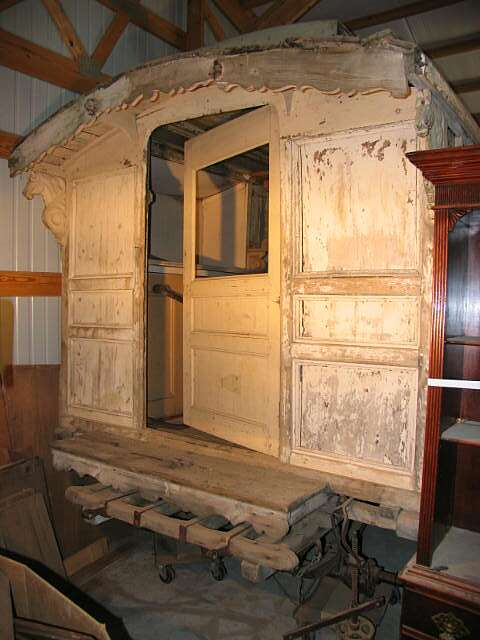
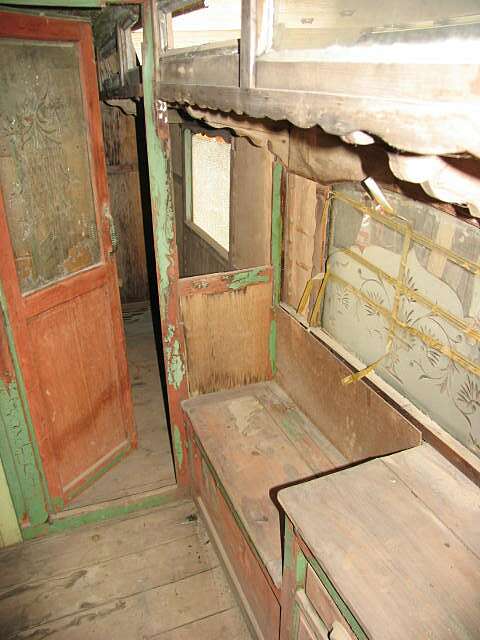
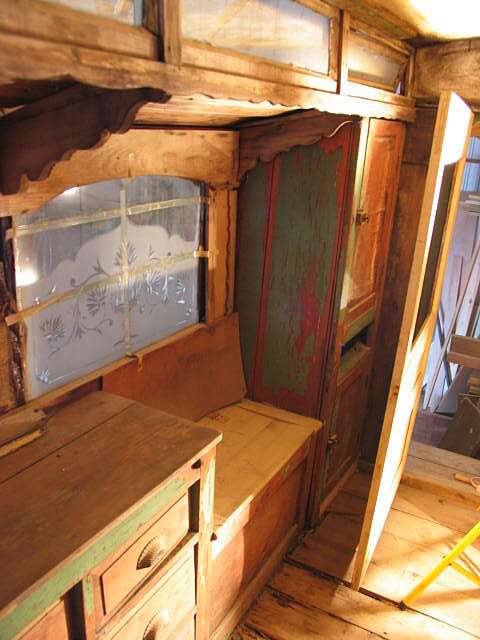
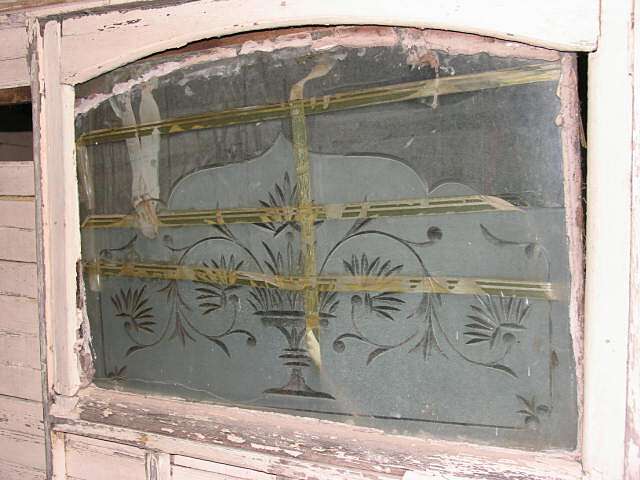
The front room is very charming, with built-in cabinetry on both sides. One side has storage and a closet with a fireplace in the center. It is lined with an enameled triple screen in green and white, and there would have been some kind of heating stove in the center with a smoke pipe going up via sockets through the roof. Such a stove may also have been used for cooking in inclement weather; otherwise Gypsies prefer to cook over an open outdoor campfire.
The double mantel is hand-carved with shelves for display of treasures. Opposite the fireplace is the left side of the wagon with the carved glass windows. Built-in cabinets with hand dove-tailed drawers and iron pulls alternate with window benches.
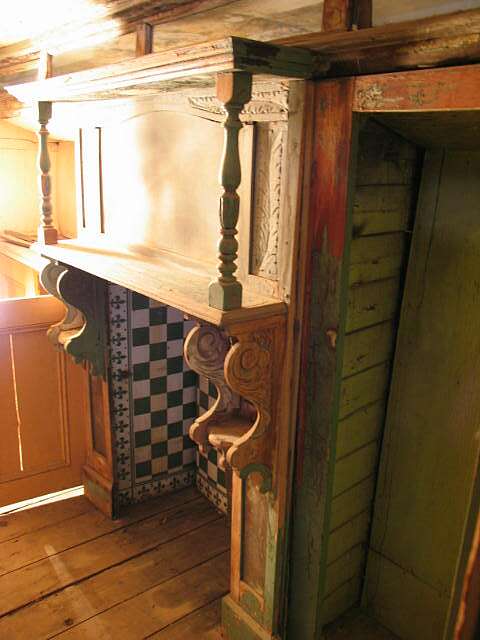
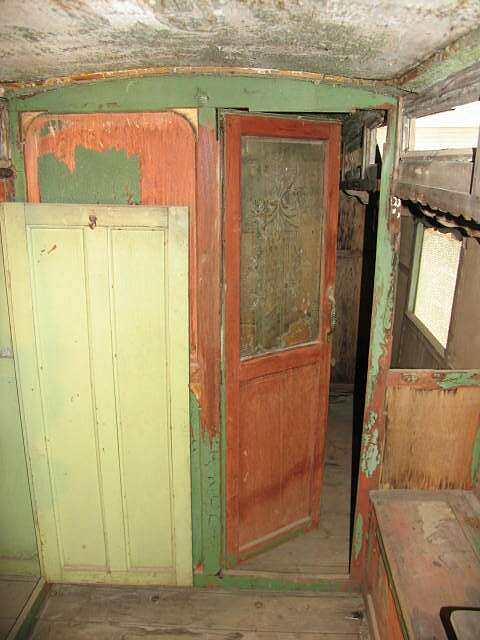
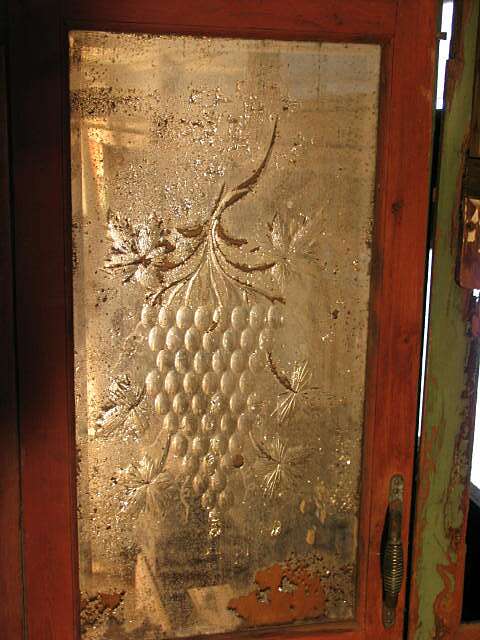
To the rear of the wagon is the bedroom, reached through a door with a magnificent beveled and carved glass mirror with a grape motif and some deteriorated silvering. The bedroom is a simple space just over 6’ square. The ceiling has the best preserved original hand painting, with colorful designs using gold details in a traditional style reminiscent of the designs on playing cards. There are losses and flaking, but the glorious designs and details are clear. The ceiling is about 71” above the floor.
